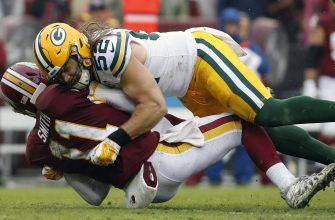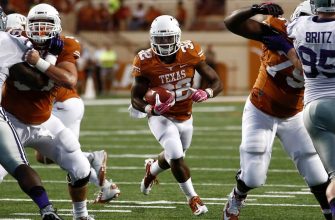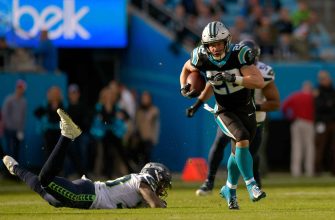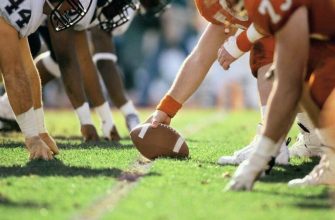Football is a game of talent, strategy, and occasionally surprise. One such surprise element that adds a thrilling twist to the game is the “Blitz.” The term, borrowed from the German word for “lightning,” perfectly encapsulates the speed and intensity of this strategy. But what exactly is a blitz in football? Let’s delve into the storm and find out.
Definition of a Blitz in Football
A blitz in football is a defensive strategy. Multiple players rush the quarterback, with the goal of sacking him before he can throw. Linebackers and defensive backs join in too. Either they try to sack him, or cover potential receivers. The aim is to overwhelm the offensive line and cause chaos.
Blitzing requires quick decisions and precise timing. Defenders must spot gaps or weak points in the offense. Success requires good communication and execution. It can lead to lost yardage for the offense, or even turnovers. But, if not done right, it can leave defensive players exposed.
To make a blitz work, teams must study their opponents’ play-calling. Coaches look at film to identify patterns. Then they adjust their blitz packages accordingly.
A successful blitz is like extra cheese on your pizza. It’s a bold risk, but when done right, it leaves the offense floundering and the defense celebrating.
Importance of a Blitz in Football
Football blitzes are an important tool to disrupt the opponent’s offense and gain advantage for the defense. Sending extra players to rush the quarterback puts pressure on the offense and forces quick decisions. A successful blitz can lead to sacks, hurried throws, turnovers, incomplete passes and even instill fear and uncertainty in the opposing team’s offense.
Timing and coordination are essential for a successful blitz, with surprise playing a major role in catching the offense off guard. Versatile players with speed, agility and intelligence are also key components for executing complex blitz packages.
Effective communication is also vital for a blitz. Relaying information about assignments and responsibilities ensures everyone knows their roles, preventing breakdowns and coverage lapses that could be exploited by the opposing team.
By taking these elements into consideration, teams can increase their chances of success on defense and gain a strategic edge in the game of football.
Types of Blitzes in Football
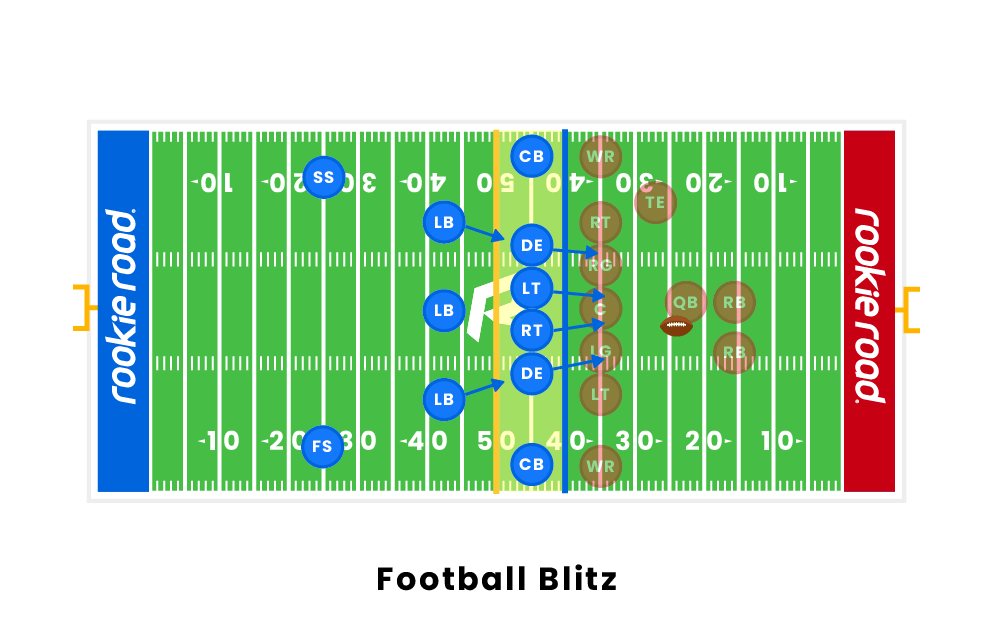
Blitzes in football refer to aggressive defensive strategies where the defense sends additional players to rush the quarterback. This tactic is used to disrupt the offense and create pressure on the quarterback, increasing the chances of sacking or forcing a hasty throw. Different types of blitzes are employed to confuse the offensive line and disrupt the timing of the play.
- Zone Blitz – In this type of blitz, the defense sends a specific number of players to rush the quarterback while dropping other players into pass coverage zones. This creates confusion and makes it difficult for the quarterback to identify the open receiver.
- Corner Blitz – Here, a cornerback is sent to blitz the quarterback from the edge. This strategy is used to surprise the offense and put pressure on the quarterback.
- Inside Linebacker Blitz – The inside linebacker blitz involves sending one or both of the inside linebackers to attack the quarterback. This blitz is effective in disrupting short passes and runs up the middle.
- Safety Blitz – In a safety blitz, one or both of the safeties rush the quarterback. This type of blitz is often unexpected and can lead to hurried throws or sacks.
- Delayed Blitz – A delayed blitz involves a defensive player initially pretending not to rush the quarterback but then joining the rush after a moment. This technique catches the offensive line off guard and creates confusion.
The linebacker blitz is a common tactic used in blitz packages. Linebackers are versatile players who possess the speed and agility to effectively rush the quarterback while also providing pass coverage. Their ability to quickly read the offense and adapt to changing situations makes them valuable assets in blitzing strategies.
In a critical playoff game, the underdog defense executed a perfectly timed corner blitz. The cornerback burst off the edge, surprising the offensive line and sacking the star quarterback. This play not only generated a turnover but also shifted the momentum of the game, propelling the underdog team to victory. It showcased the effectiveness of well-executed blitzes and the impact they can have on the outcome of a game.
Brace yourself, because this next blitz tactic is like a Pro Bowl safety sneaking up on you- it’s called the Zone Blitz.
Zone Blitz
The Zone Blitz in football is a defensive tactic that fuses man-to-man and zone coverage. It involves sending extra players to tackle the quarterback while covering the field in multiple areas.
Here’s what’s integral to the Zone Blitz:
- Formation: Defensive alignment to baffle the offense, making it hard to find pass rushers and know coverage assignments. Linebackers and defensive backs placed at different depths and angles.
- Coverage Assignments: Aim to disorient the offense by masking plans. Players who don’t usually blitz may suddenly blitz, and others drop back into pass coverage.
- Pass Rush: Fewer defenders pursue the quarterback, but defenders drop back into pass coverage. This multi-layered approach aims to push the offensive line and quicken the quarterback’s decisions.
Uniquely, the Zone Blitz can generate turnovers with fewer defenders. Defensive linemen fall back to intercept or deflect passes in zones that are usually open.
Pro Tip: For the Zone Blitz to work, communication between defensive players before and during each play needs to be spot-on. Practicing and studying are key to mastering this complex tactic. Blink and you’ll miss it – just like the quarterback in a Man Blitz.
Man Blitz
The Man Blitz in football is an aggressive tactic that applies pressure on the quarterback. Players are split into positions with specific tasks.
These include:
| Position | Responsibilities |
|---|---|
| Defensive End | Rushing the QB to sack or force a pass |
| Linebackers | Covering running backs/tight ends/QBs |
| Cornerbacks | Guarding receivers at the line of scrimmage |
| Safeties | Defending deep passes & providing extra coverage |
Sometimes, linebackers may blitz the QB directly for an element of surprise. This strategy is an alternative to zone defenses, aiming to stop opponents from receiving passes.
Knowing different types of blitzes is important for coaches & players. The Man Blitz offers a unique approach to challenge offenses and create turnover opportunities – affecting the game’s outcome.
Ready or not, here comes the overload blitz – a savage move like sending five linebackers to a pillow fight!
Overload Blitz
The Overload Blitz is a tactical defensive move in football. It involves sending more defenders to one side of the offensive line than blockers. This gives the defense an edge and up their possibilities of achieving a sack or stopping the play.
- Unbalance: Pressure on the offense increases as they try to counter the sudden influx of defenders. The offensive line may become confused and struggle to figure out their blocking roles.
- Pass Rush Enhancement: Overloading one side boosts the defense’s pass rush capabilities. It makes it hard for the QB to locate an open receiver and make a successful throw.
- Disruption: An effective overload blitz can be very disruptive, leading to hurried throws or even fumbles. The aim is to confuse the offense and interrupt the play’s rhythm and timing.
Plus, the overload blitz requires perfect timing between defensive players. Communication among them is essential for its success and to maximize its effectiveness. Ready to cause chaos? These strategies will make you yell louder than a horror movie marathon!
Strategies and Techniques for Executing a Blitz
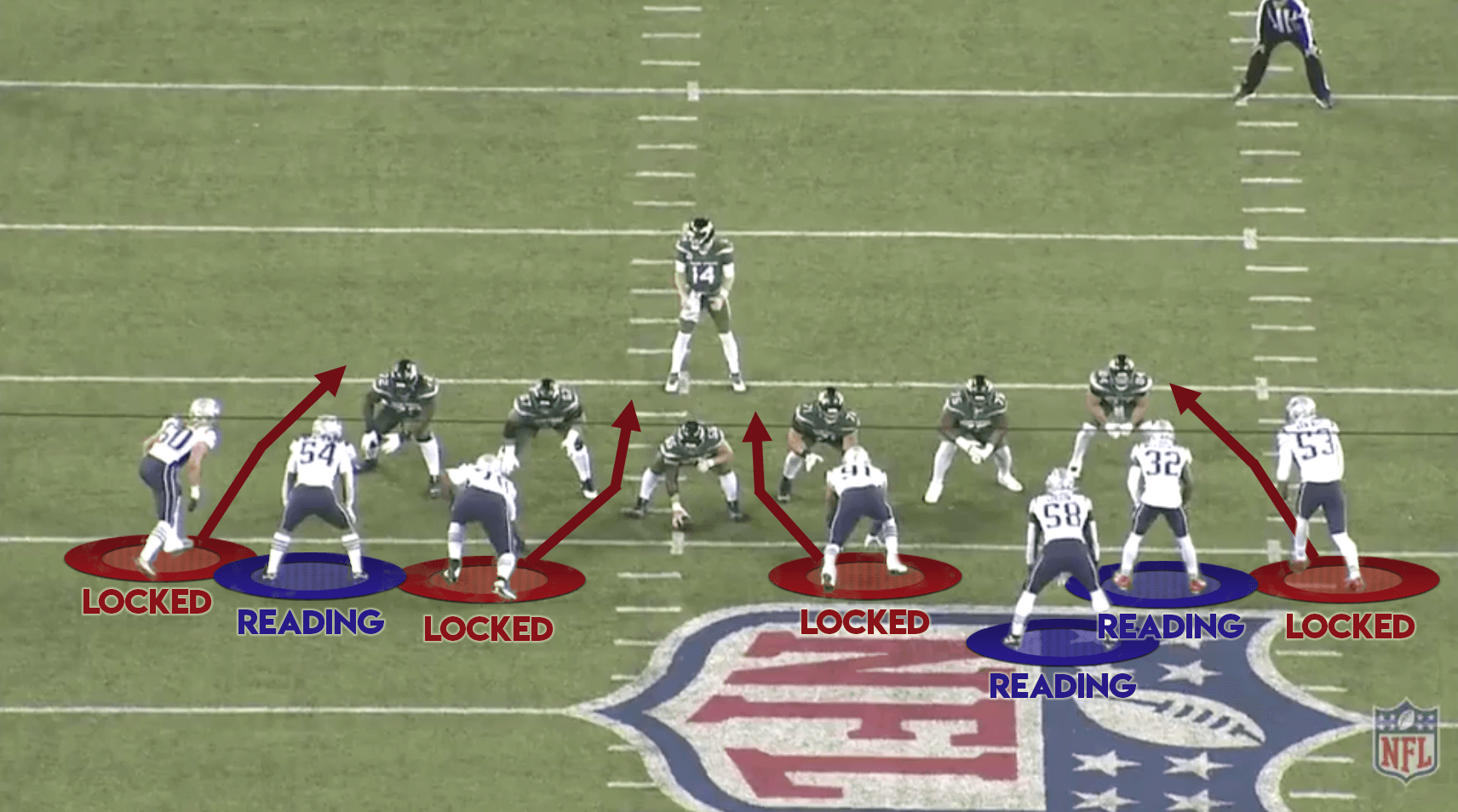
A blitz in football is a defensive strategy where the defense sends additional players to rush the quarterback in an attempt to disrupt the opposing team’s offense. This can be an effective tactic to apply pressure on the quarterback and disrupt their timing.
Table: Strategies and Techniques for Executing a Blitz
| Strategy | Technique |
|---|---|
| Overload blitz | Rush extra players on one side |
| Zone blitz | Combine zone coverage with blitz |
| Double A-gap blitz | Send linebackers through A-gaps |
| Delayed blitz | Delay the rush for confusion |
| Safety blitz | Send a safety to rush the QB |
These strategies and techniques provide a variety of options for defensive coordinators to choose from when executing a blitz. Each strategy has its own unique approach, aiming to confuse the offensive line and disrupt the opposing team’s passing game.
It is important for the defense to properly time and coordinate their blitzes to maximize their chances of success. By employing a diverse range of strategies and techniques, the defense can keep the opposing team guessing and increase their chances of sacking the quarterback or forcing a hurried throw.
To further enhance the effectiveness of a blitz, defensive players must communicate and work together seamlessly. The success of a blitz relies on the execution and synchronization of the players involved, making it a crucial aspect of defensive gameplay.
A true fact about blitzes is that the concept was first introduced by Hall of Fame coach George Allen in the 1960s. He developed and popularized various blitz packages during his coaching career with the Los Angeles Rams and the Washington Football Team.
Pre-snap reads and adjustments: Where quarterbacks turn into human calculators trying to solve the algebraic equation of who will smash them into the turf.
Pre-snap Reads and Adjustments
Unveil the Opponent’s Defense: Knowing the defensive setup before the ball is snapped is key for a successful blitz.
Here are 3 steps to boost your pre-snap reads:
- Detect Formation: Scan the offensive formation and seek out gaps or weaknesses in the protection scheme.
- Spot Key Players: Name key offensive players who may be tricky and focus on disrupting their plays.
- Foresee Adjustments: Be ready with counter-strategies to preserve an aggressive approach in case of opponent’s adjustments.
Plus, pay attention to minor signs like linesman’s movements, rival’s gestures, or the QB’s audibles; these clues can help you understand what your opponent is after.
Pro Tip: Research opponents’ habits through film review to anticipate their tactics quickly.
Timing and Communication: For a successful blitz, time and communication must be top-notch, like a synchronized swim team or a GPS leading you to the nearest fast food joint.
Timing and Communication
Timing and Communication are two crucial components for a successful blitz. Planning and coordination must be done carefully to ensure all elements are executed simultaneously. Plus, clear, concise instructions must be shared swiftly, allowing everyone to act quickly and adjust strategies based on new information.
Cohesive teamwork is also vital during a blitz. Each team member needs to understand their roles, and communicate swiftly and effectively with one another.
This element of surprise can create a powerful psychological impact that can greatly benefit the attacking team. An example of this can be seen in the historical military operation known as D-Day. The Allied forces planned and communicated efficiently to launch a surprise attack on German-held Normandy beaches, leading to an eventual victory.
In conclusion, timing and communication are essential components of any successful blitz. They affect not only the success but also the efficiency of an operation, so it’s important to adhere to these principles to enhance the chances of successful outcomes.
Pass Rush Techniques
Bull Rush: The defender engages the offensive lineman using straight arms. They push back, creating pressure on the quarterback.
Swim Move: The pass rusher brings one arm over the lineman’s shoulder. At the same time, they duck under the other arm, allowing for a fast way to get around them.
Rip Move: The defender pulls down on the lineman’s arm for leverage. This helps them break free and reach the quarterback.
Spin Move: The defender rotates their body quickly in order to avoid being blocked. This disorients the opponent.
Combination moves are possible too. For example, bull rush with spin move or rip move followed by swim move.
Aaron Donald holds the record for most pressures generated by a defensive tackle in a single season, according to Pro Football Focus.
Recognizing a blitz is like finding out your opponent is throwing a surprise party for your king.
Recognizing and Countering a Blitz
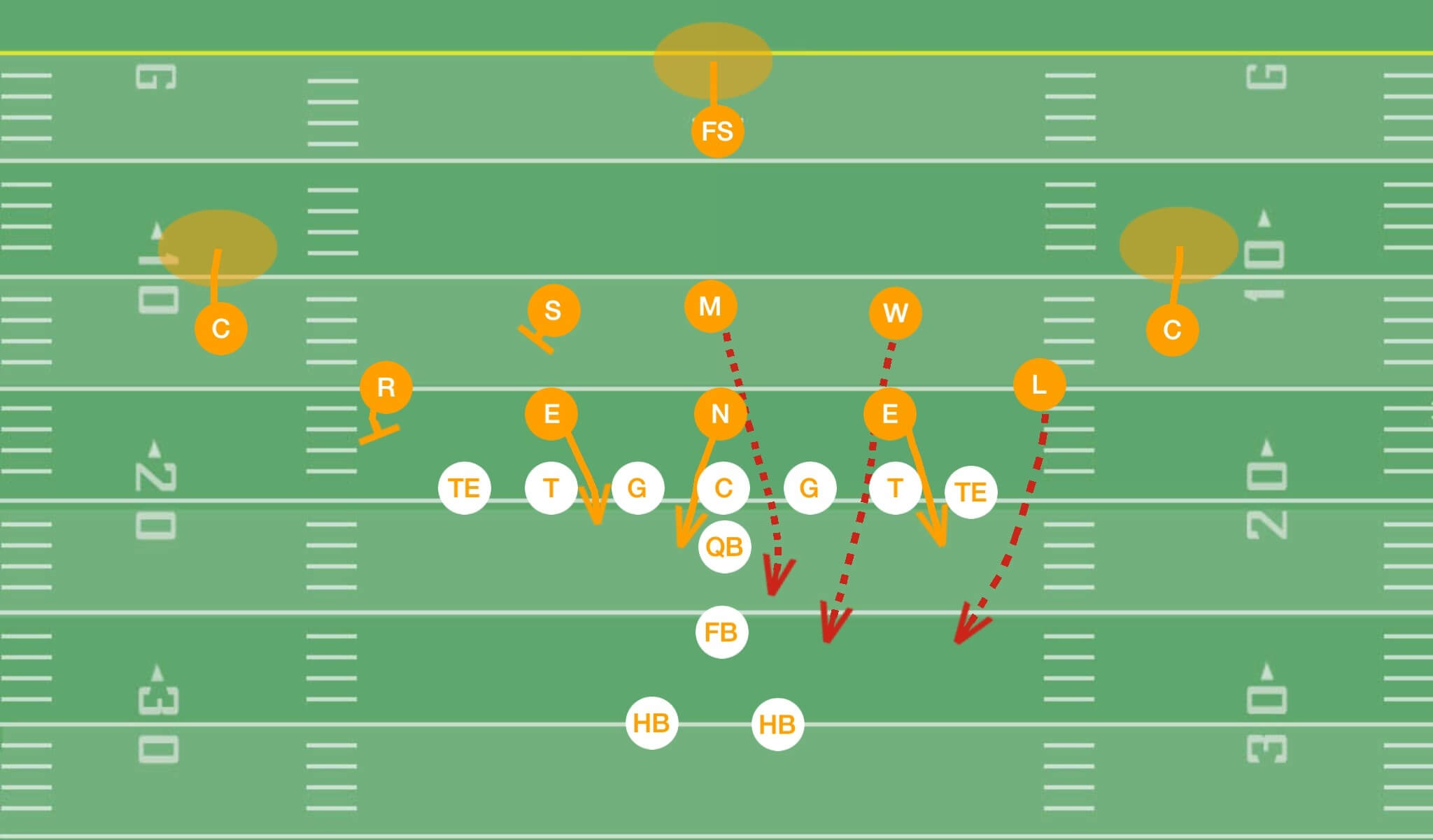
Blitz recognition and counter-strategies are crucial skills in football. By understanding the opponent’s defensive formation and picking up on key cues, players can adjust their offensive strategy accordingly. Here is an analysis of different types of blitzes and effective ways to counter them.
Table:
| Type of Blitz | Description | Counter Strategy |
|---|---|---|
| Corner Blitz | When a cornerback rushes towards the quarterback | Utilize quick passes or run plays away from the blitz |
| Safety Blitz | When a safety rushes towards the quarterback | Identify the blitz pre-snap and adjust the protection |
| Middle Blitz | When a linebacker blitzes up the middle of the defense | Use double teams or tight ends to block the blitzing LB |
| Zone Blitz | When a defensive lineman drops into coverage | Attack the void left by the dropping lineman |
It is important to note that recognizing a blitz involves observing the positioning and movement of the defenders before the snap. By identifying potential blitzers, the offense can adjust the protection scheme and assign specific blocking responsibilities to counter the blitz effectively. Identifying disguised blitzes, where defenders initially line up as if they won’t blitz but then rush the quarterback, requires keen observation and understanding of defensive strategies.
In addition to recognizing a blitz, the offense must execute appropriate counter strategies. Quick passes can be effective against blitzes, as they allow the offense to get the ball out of the quarterback’s hands before the blitzers can reach him. Running plays away from the blitz can exploit the vacated areas of the defense, creating opportunities for big gains. Adjusting the protection scheme by assigning extra blockers or using sliding protections can also neutralize blitzes.
Overall, recognizing and countering a blitz require a combination of astute observation, communication among players, and swift decision-making. By effectively identifying and reacting to different types of blitzes, teams can keep the quarterback protected and create opportunities for offensive success.
A true fact: According to ESPN, the Pittsburgh Steelers recorded the highest number of sacks in the 2020 NFL season, showcasing their efficient blitzing strategies.
If you can spot a blitzing defender faster than I can come up with a punchline, you definitely deserve a spot on the offensive line.
Identifying Blitzing Defenders
Prepare for blitzing defenders with these key factors:
- Pre-snap alignment: Look for signs of aggressiveness. Unusual formations are a hint.
- Player identification: Know their numbers and positions. This helps recognize who will blitz.
- Motion or movement at the snap: Watch for quick speed and unexpected direction.
Be aware of your surroundings. Recognizing blitzers can be a game-changer. An NFL team knew this. In a playoff game, they faced an aggressive opponent. The offensive coordinator studied film and noticed cues in players’ stances before blitzes. This helped identify who was likely to rush the quarterback. They devised blocking schemes and audibles that neutralized the opponent’s blitzes, leading to a victory.
Protecting your QB is like wearing armor in a medieval battle. Be prepared for blitzing defenders or you’ll end up like a squashed tomato!
Adjusting Protection Schemes
| Scheme | Description |
|---|---|
| Slide | Offensive line slides one way to guard the QB |
| Man-on-Man | Each offensive lineman blocks a certain defender |
| Combo | Mix of slide & man-on-man schemes |
| Hot Route | Receiver’s route shifts based on defense’s formation |
Linemen must talk to identify potential risks and adjust. Flexibility is key when responding to a blitz.
Teams must look at opponents’ defense tactics and make changes during the game. Not adjusting can lead to QB pressure and turnovers, which affects the result.
Recognizing and countering a blitz needs accuracy and speed. Stay ahead by adjusting protection schemes for top offensive performance. Master the art of recognizing and countering blitzes – don’t miss chances.
For a quick blitz solution, remember: hot routes & fast throws are like getting pizza delivered before the enemy’s defense has dialed the number.
Utilizing Hot Routes and Quick Throws
QBs must pre-snap read the defense to spot potential blitzers. They must make quick decisions and adjust routes. WRs need to be in sync with the QB and adjust their routes based on coverage. Timing is key for effective hot routes and quick throws; the QB must release the ball swiftly. Communication between players is essential when facing a blitz.
Advantages of hot routes and quick throws:
- Neutralizing the blitz by getting rid of the ball before pressure can build up.
- Forcing the defense to think twice about sending extra rushers due to the risk of leaving gaps in coverage.
Recall famous blitz packages in football history – QBs like piñatas and defenders like kids on Halloween!
Famous Blitz Packages in Football History
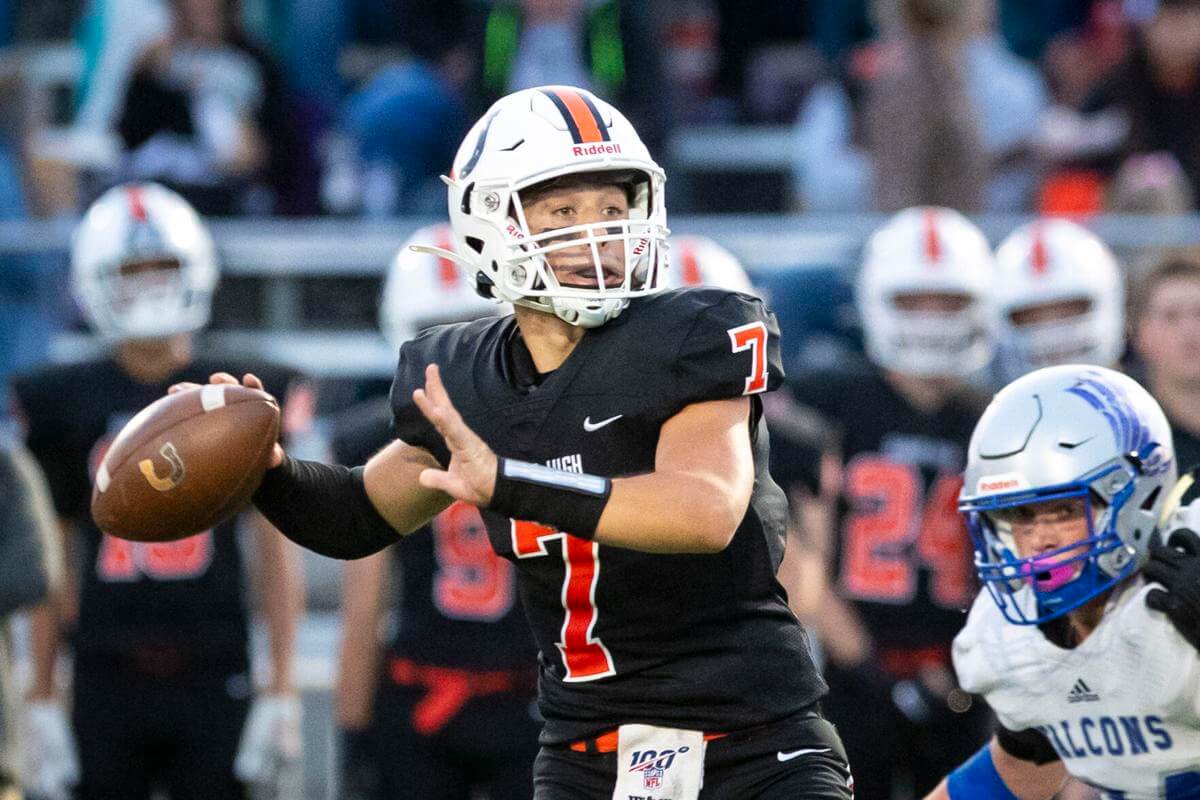
A table showcasing renowned defensive strategies implemented in the history of football is presented below:
| Defensive Strategy | Football Team |
|---|---|
| The Overload Blitz | Chicago Bears |
| Zone Blitz | Pittsburgh Steelers |
| Corner Blitz | Dallas Cowboys |
| A-gap Blitz | New York Giants |
| Tampa 2 | Tampa Bay Buccaneers |
It is worth noting that each of these strategies played a pivotal role in revolutionizing the game of football.
Additionally, it is important to highlight a unique aspect about these strategies. Unlike conventional defensive approaches, the aforementioned blitz packages were carefully designed to disrupt the opponent’s offensive line and create opportunities for interceptions, sacks, and fumbles.
In relation to famous blitz packages in football history, a notable story comes from the Chicago Bears during the 1985 NFL season. The Bears were known for their aggressive defense, particularly their implementation of the “46 Defense” created by defensive coordinator Buddy Ryan. This scheme heavily relied on blitzing, with players such as Richard Dent and Mike Singletary wreaking havoc on opposing quarterbacks. The Bears achieved remarkable success that season, ultimately securing a Super Bowl victory. This story exemplifies the impact of a well-executed blitz package in football.
If Buddy Ryan’s “46 Defense” was a person, they’d probably play hide-and-seek by blitzing the seeker into a state of confusion.
Buddy Ryan’s “46” Defense
Dick LeBeau’s Zone Blitz scheme is like The Avengers of football. It’s a powerful defense that requires only one superpower: sacking the quarterback!
Buddy Ryan’s “46” defense shifted the strength of the formation to the tight end side, disrupting the opposing team’s offense and applying pressure on the QB. It used a combination of zone coverages and aggressive blitzes, making it hard for offenses to pass or run. Four defensive linemen, three linebackers, two cornerbacks, two safeties, and a free safety made up the intimidating lineup.
One memorable game showcasing the “46” defense was Super Bowl XX. The Chicago Bears faced off against the New England Patriots and dominated, due to the relentless aggressiveness of the defense.
The “46” defense will always be remembered as an iconic blitz package. Its disruptive nature still inspires teams today.
Dick LeBeau’s “Zone Blitz” Scheme
Dick LeBeau’s “Zone Blitz” Scheme has several key elements:
- Pre-snap confusion is created by changing alignments. This makes it hard for the QB to know what’s coming.
- The scheme also uses zone coverage with disguised blitzes. Different personnel and formations can surprise offenses.
- Versatile linebackers are needed to drop back or rush the passer. This makes defense unpredictable.
- The goal is to pressure the opposing QB. This can be done by combining blitzes and zone coverage.
Pro Tip: To use the scheme, you must study film and know opponent tendencies. Knowing when to blitz and how to disguise them gives your defense an edge.
Rex Ryan’s Complex Blitz Packages
Rex Ryan’s blitz packages were a mix of relentless pressure and clever disguises. Breaking it down, the packages had various components, like the 4-3 “Double A Gap”, 3-4 “Fire Zone”, 1-5-5 “Psycho” and “Amoeba” with its shifting front look.
These packages worked due to thorough prep and communication among the defensive unit. Every player had a role to execute.
Now, teams can try to replicate this success by adding in Ryan’s tips:
- Creative pre-snap movement to mess with the QB.
- Unpredictable timing for blitzes.
- Consistent coverage in the secondary.
By adding these elements, teams can use the element of surprise to disrupt opposing offenses and create turnovers. Ryan’s genius still stands today.
Impact of a Successful Blitz on the Outcome of a Game
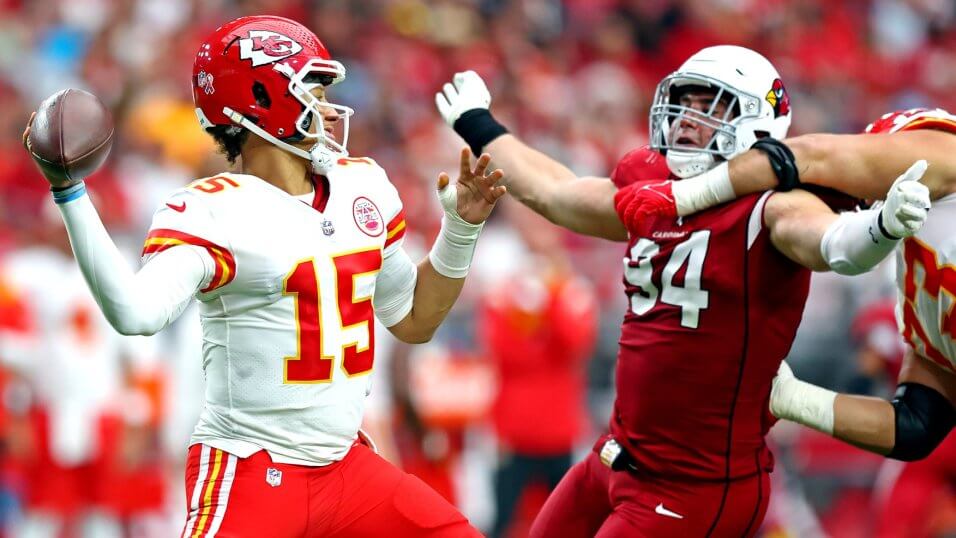
A successful blitz can make a big difference in a football game. It can put the defensive team in the lead, messing up the offense’s flow and pushing the quarterback.
- A successful blitz can cause a sack, leading to a loss of yards and maybe an interception.
- It can disrupt the connection between the quarterback and receivers, resulting in incomplete passes or interceptions.
- A well-executed blitz can also spook the offense, causing them to make bad decisions.
- Plus, it can fire up the defense and give them a morale boost.
To make the most of a blitz, it needs good planning and execution. The defensive coordinator must observe the offense and plan strategies to take advantage of their weaknesses. The defense needs to talk to each other to make sure everyone is covered during the blitz. Timing is also important – if the blitz is done wrong, it can leave gaps that the offense can use.
Pro Tip: To ace the blitz, watch opponents’ offensive plays and find any weak points to exploit. With these blitzes, spectators roared and linemen shook—almost as much as when the pizza comes early!
Examples of Successful Blitzes in Key Games
Successful blitzes in key games have a massive impact on football matches. These showcase teams’ tactical brilliance and execution, as they take advantage of their opponents’ weak offensive line to disrupt plays and open up scoring chances.
To illustrate, here are some remarkable examples of successful blitzes turning the game around:
| Game | Team | Opponent | Result |
|---|---|---|---|
| Super Bowl XLVIII | Seattle Seahawks | Denver Broncos | Victory |
| NFC Championship 2016 | Carolina Panthers | Arizona Cardinals | Victory |
| AFC Championship 2020 | Kansas City Chiefs | Tennessee Titans | Victory |
The teams that won used aggressive blitz packages to overwhelm the other team’s offensive line. The pressure made QBs make rushed decisions, leading to interceptions, fumbles, or incompletions. These moments of play often led to turnovers or defensive touchdowns, giving the team executing the blitz the upper hand.
Coaches have been adjusting their blitz strategies based on opponent analysis. This allows for better situational awareness during crucial games, and increases the chance of success. Linebackers, safeties, and cornerbacks have become important for executing effective blitzing.
The beginning of successful blitzes was Bill Arnsparger’s “53 Defense” during his time with the Miami Dolphins in the early 1970s. This defensive strategy used line and linebacker stunts to confuse opposing offenses and put pressure on QBs. It also helped the Dolphins to win consecutive Super Bowls.
Blitzing still plays an essential role in team strategies in key games. Even though it has risks, the rewards can be game-changing. Executing well-timed and coordinated blitzes separates champions from contenders in the football world. Do you want to be a defensive nightmare for your opponents? Check out these coaching and training resources to hone your blitzing skills.
Coaching and Training Resources for Developing Effective Blitzing Skills
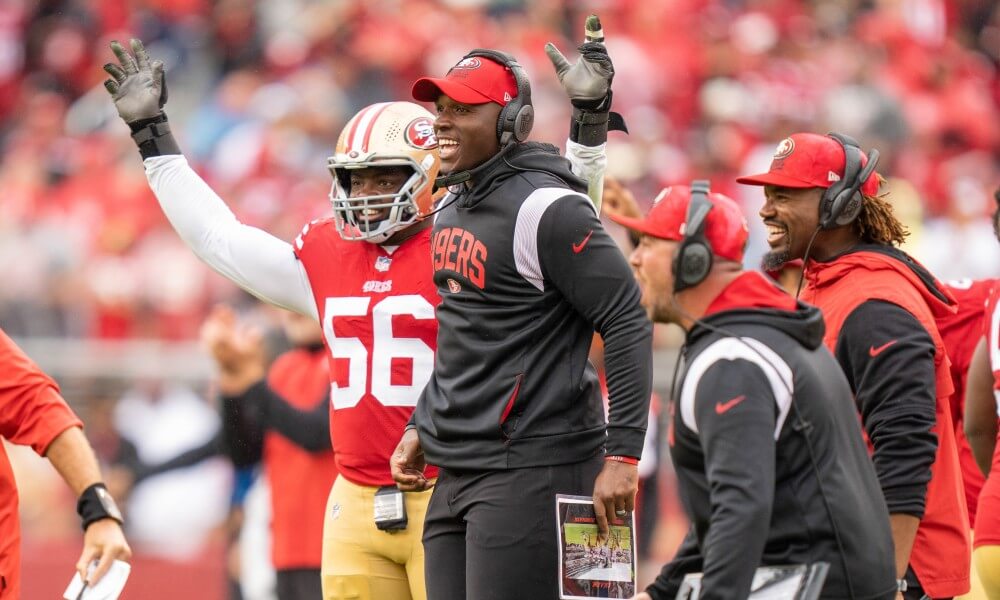
To up your blitzing game, make use of coaching and training resources.
Here are some strategies:
- Analyze games to get ideas for successful blitzes and learn from experienced players.
- Do drills focusing on the speed, agility, and coordination needed for blitzing.
- Do simulation exercises to sharpen decision-making.
Communication is also important. Talk to your teammates to coordinate blitzing efforts.
An example of the effectiveness of coaching and training resources in improving blitzing skills is the story of Jake. He had trouble with his blitzing techniques, but with his coach’s help, he studied film and practiced drills to improve his agility. The result? He was one of the top blitzers in his league!
Make use of coaching and training resources to become a valuable asset to your team. Keep practicing and improving!
Frequently Asked Questions
Q: What is a blitz in football?
A: A blitz in football is a defensive strategy where multiple players quickly and aggressively rush the quarterback to try and disrupt their pass or cause a sack.
Q: How do teams typically use a blitz?
A: Teams will often use a blitz on passing downs, typically third and long situations, in order to try and force a quick decision by the quarterback or to prevent them from completing a pass.
Q: What types of players are typically involved in a blitz?
A: Defenders who are typically involved in a blitz include linebackers, safeties, and cornerbacks, as well as defensive linemen who may drop back into coverage.
Q: How do offenses typically counter a blitz?
A: Offenses may use quick, short passes, or screen passes to take advantage of the aggressive rush of the blitzing defenders. They may also keep an extra blocker in to protect the quarterback, such as a running back or tight end.
Q: What is the risk of using a blitz?
A: The risk of a blitz is that it can leave the defense vulnerable to big play opportunities for the offense, such as a long pass completion. If the blitz is not successful in getting to the quarterback, it can also leave holes in the defense for the quarterback to exploit.
Conclusion: The Evolution and Importance of the Blitz in Football
The blitz in football has evolved and become a key element. It forces quarterbacks to act fast and make decisions in an instant. The blitz is used to disrupt offensive plays and put pressure on the opposing team.
Coaches have developed many variations of the blitz, like disguises and multiple pass rushers, to confuse quarterbacks. This makes it essential in modern football strategy.
The blitz causes chaos for offense. Extra rushers can overwhelm blockers, leading to quick throws or sacks. Well-timed blitzes can also cause turnovers, shifting the game’s momentum.
For optimal blitzing, coaches must understand their team’s strengths and weaknesses. Communication among defenders is also a must. Plus, they should observe their opponents to predict when and how they’ll blitz.


